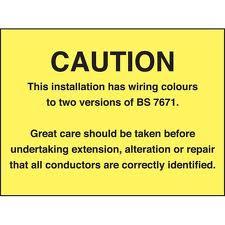I've stripped out the wafer-thin insulation from my loft and am replacing with 70mm between joists then 200 mm over the top. Given the limited slack of my existing wires (and that I can't afford to rewire), I think running the wiring over the top of the insulation is not an option. There are two oldish junction boxes and then the general tangle of flat cable. There's no electric shower, and I presume (is this likely to be correct?) that socket wiring for appliances wouldn't go through the loft.
From other posts, it looks like it is OK to run lighting cables under the insulation (against joist or foil-backed plasterboard in this case), given that it is only a 5A circuit and hence running well below the max cable load. as long as it is only the 5A lighting circuit. Can anyone confirm this?
From other posts, it looks like it is OK to run lighting cables under the insulation (against joist or foil-backed plasterboard in this case), given that it is only a 5A circuit and hence running well below the max cable load. as long as it is only the 5A lighting circuit. Can anyone confirm this?


